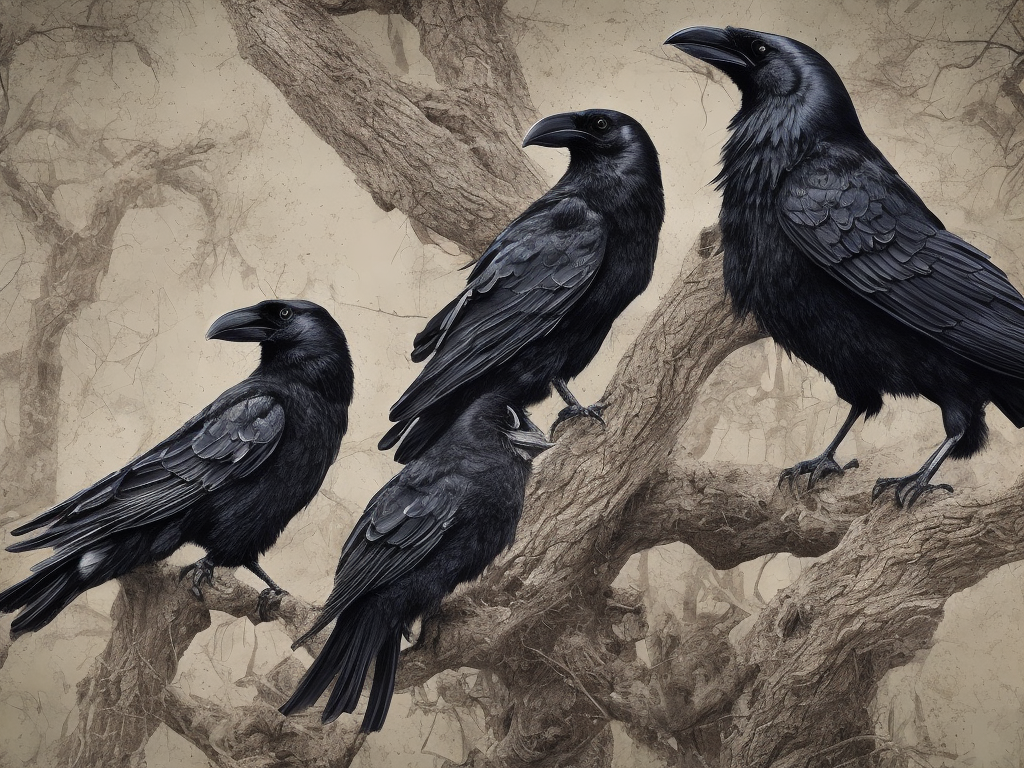
Bird watchers and ornithologists alike know that crows and ravens are often mistaken for one another, and it’s easy to see why. They are both large, black birds that are highly intelligent and share similar habitats. However, there are a few key differences that set these two species apart. Here’s a closer look at what distinguishes a crow from a raven.
Physical Characteristics
At first glance, crows and ravens do look quite similar. Both birds are have black feathers, a sharp beak and legs made for perching in trees. However, there are a few things that set the two apart physically. Ravens are generally larger than crows, with a wingspan that can reach up to 4 feet. Ravens also have longer and thicker beaks than crows, which they use to crack open and eat nuts, seeds and other hard foods.
Another physical difference between the two birds is their tail feathers. A crow’s tail feathers are fan-shaped with a straight edge. On the other hand, a raven’s tail feathers are wedge-shaped with a pointed edge. Additionally, ravens have a more prominent throat hackle, which is a collection of long, pointed feathers that erupt from the base of the bird’s neck. When a raven is at rest, its throat hackle has a more noticeable shape than on a crow.
Behavior
While crows and ravens both share highly intelligent nature, they have different tendencies and behaviors that can help you tell them apart. Crows are often found in flocks, either living together in large groups, or with other bird species. They are highly sociable birds, and as a result, they also have a complex communication system. They use lots of different calls and vocalizations to communicate with each other and to warn one another of danger.
Crows also prefer to live in areas that are near human activity, such as parks or residential areas. They are omnivores and are happy to scavenge for food in areas where humans are present. Consider how many stories you’ve heard of crows stealing food from people enjoying a picnic in the park!
Ravens, on the other hand, are more solitary birds. They tend to live in pairs or alone, and their social structure is much simpler than crows. Ravens are highly territorial birds and are known for their aggressive nature when it comes to defending their territory. Additionally, ravens are scavengers too, but they are more likely than crows to hunt their own prey.
Vocalizations
As mentioned earlier, both crows and ravens are vocal, with lots of different calls and vocalizations. However, there are some key differences in these sounds that bird watchers can recognize.
Crows have a very distinctive call that most people are familiar with - “caw.” This sound is usually loud and can be heard from a distance. In addition to their “caw” call, crows have a wide range of other vocalizations they use with other members of their flock. They even have regional dialects, just like humans!
Ravens also have a distinctive call that is quite different from that of the crow. Their call is known as a “croak” and it’s often described as a low, guttural sound. Ravens generally only make this sound when they encounter other birds, or when they want to defend their territory.
Habitat
Crows and ravens both live in a variety of habitats, but there are some differences in the types of environments where you’re most likely to find them. Crows are found in a wide range of habitats, including woodlands, farmlands, urban areas, and even deserts. You’re likely to see a crow perched on a tree branch or picking food off the ground in any of these habitats.
Ravens, on the other hand, are generally found in more remote areas such as mountains or forests. They prefer to live in areas where there are few humans or other animals around. Additionally, ravens are known for their ability to adapt to harsh environments, which allows them to live in areas where few other birds can survive.
In conclusion, while these two birds are undoubtedly similar in many ways, there are several key differences that set crows apart from ravens. From physical characteristics to behavior and vocalizations, these birds have some key differences that make them two distinct species. Whether you're a bird watcher or simply someone who enjoys observing nature, learning about the nuances of crows and ravens can be a fascinating and rewarding experience.
 Self-Instruct
Self-Instruct